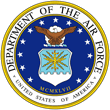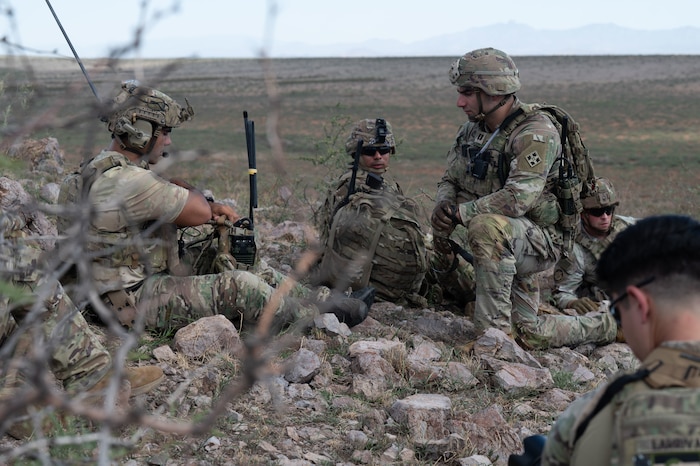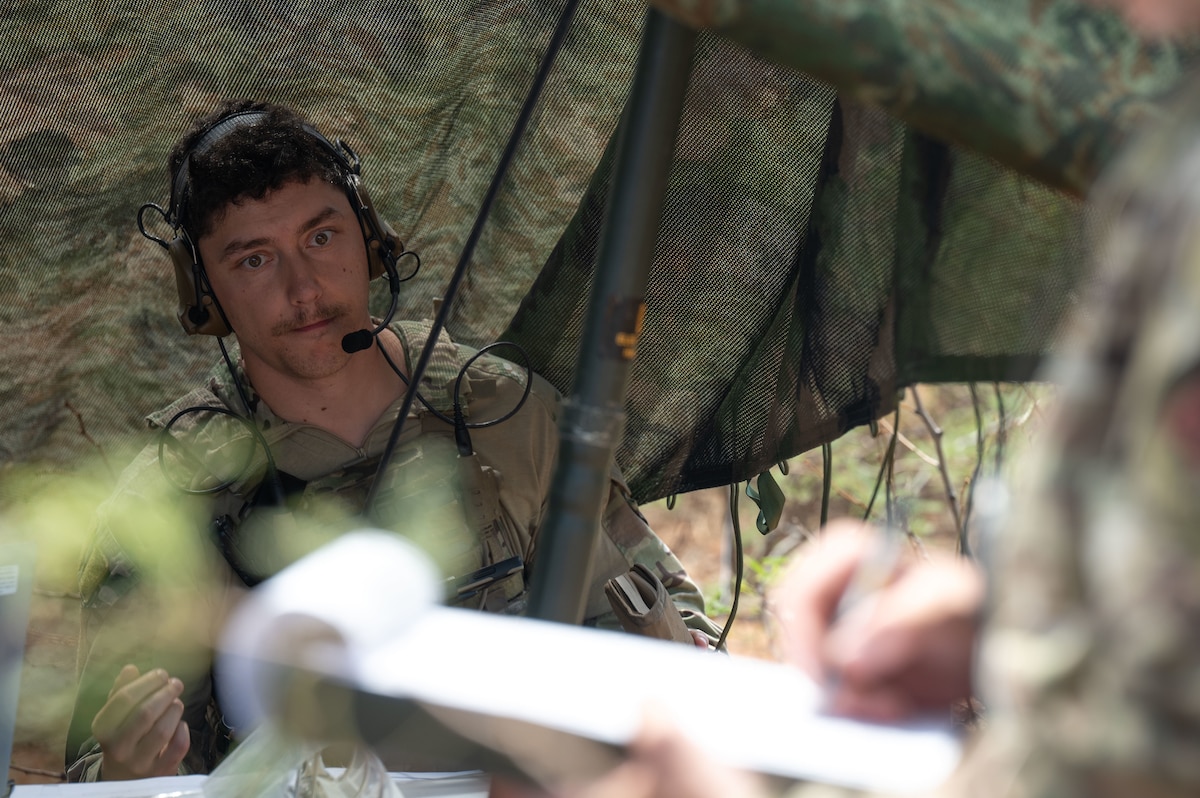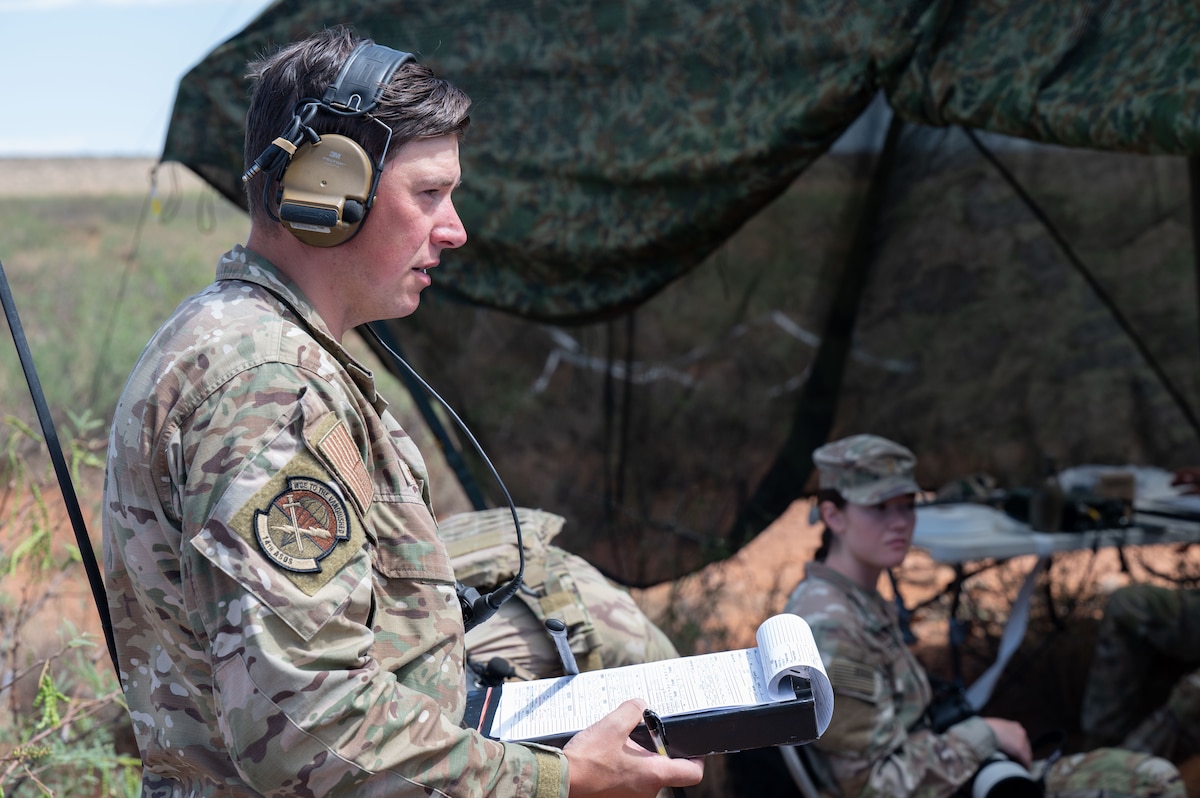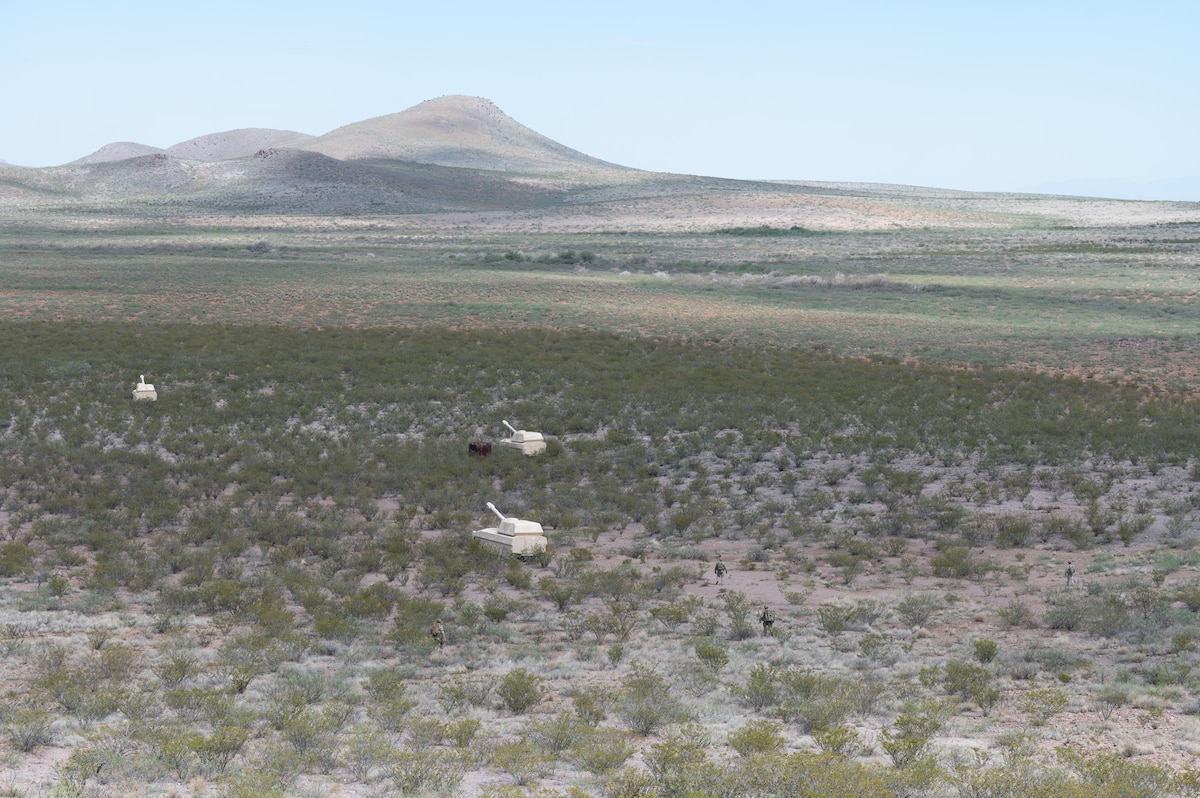Air Force, Army execute inaugural Exercise Desert Dragon showcasing readiness and lethality
U.S. Air Force and U.S. Army personnel participated in a joint exercise in Pearce, Arizona, July 21 - Aug. 8, 2025.
Airmen assigned to the 13th and 14th Air Operations Support Squadrons, the 357th Fighter Squadron, and Soldiers assigned to the 2nd Battalion, 12th Infantry Regiment took part in Exercise Desert Dragon. The exercise enhanced interoperability between Air Force and Army personnel during air-to-surface strike missions by testing members' all-domain lethal fire integration and close air support communication.
In addition to providing Air Force and Army personnel the opportunity to work closely in a training environment, Desert Dragon also gave nine pilots the opportunity to complete their 357th FS course capstone by executing CAS objectives.
“When our pilots graduate, they’re moved into a status called combat mission ready,” said U.S. Air Force Capt. Dylan Smith, 357th FS chief of weapons and tactics and lead exercise planner for Desert Dragon. “Meaning, as soon as they finish training, they could deploy the next day.”
A key element of CAS is the communication pilots receive from and deliver to joint terminal attack controllers on the ground.
During the simulated large-scale combat exercise, Air Force JTACs assigned to 13th and 14th ASOS worked with Army intelligence specialists, battle captains and ground force commanders to deconflict airstrikes with friendly force positions on the ground and direct pilots of A-10C Thunderbolt II, UH-72 Lakota and MQ-9 Reaper aircraft in their simulated attacks on opposing force positions.
“Exercises like these are always great opportunities to get training and individual certifications completed,” said U.S. Air Force Staff Sgt. David Shisler, 14th ASOS JTAC. “I used this exercise to conduct my annual JTAC recertification.”
The additional need for communication between JTACs and Army ground force commanders provided an additional challenge to information flow between the JTACs and pilots.
“The goal of a ground force commander is to synchronize ground and aerial firing capabilities on specific points to achieve maximum effect during large-scale combat operations,” U.S. Army Capt. Mohamed Elmaola, 2nd Battalion, 12th Infantry Regiment, 2nd Striker Brigade combat team assistant operations officer, Fort Carson, Colorado. “To achieve the air-to-ground strike support, we work directly with Air Force JTACs.”
The multi-phase exercise also included other assets across the Total Force, including a KC-135 Stratotanker aircraft assigned to 452nd Air Mobility Wing from March Air Reserve Base and an Army CH-47 Chinook heavy-lift helicopter assigned to the 1st Combat Aviation Brigade.
Reinforcing the common operating language and practicing cross-communication between air-to-ground and ground-to-ground forces enhances the interoperability of the 355th Wing and the 2nd Battalion, 12th Infantry Regiment.
“As an infantry battalion, some of our most critical mission-essential tasks rely on synchronizing dry and live-fire operations,” said Elmaola. “And during this exercise we’ve been able to train our staff and junior leaders to communicate in joint language in real time with real-world effects.”
Smith reiterates Elmaola’s sentiment, by noting the benefits all participating parties received during the three-week exercise.
“This was my first time seeing this type of exercise executed at this scale,” Smith said. “It was definitely a mutually beneficial training opportunity that each unit was able to capitalize on to enhance readiness and lethality of our total force.”
